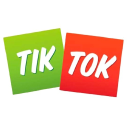I Created A Niche Text To Speech Tool & Hit 80K Users
I’m Gojko Adzic, author of Running Serverless, Impact Mapping, Humans vs Computers, and a few more books. My book Specification by Example won the Jolt Award for the best book of 2012. I’m one of the 2019 AWS Serverless Heroes, the winner of the 2016 European Software Testing Outstanding Achievement Award, and the 2011 Most Influential Agile Testing Professional Award. I’m the founder of Naraket and one of the co-founders of MindMup.
Narakeet is an online service that helps people make narrated videos easily. It is a text-to-speech video maker, aimed at people who are not video professionals, such as developers, online educators, and marketers. In brief, it turns PowerPoint presentations and markdown files into videos, creating life-like narration from speaker notes and voice-over scripts. Users can edit video as simply as they would edit text, saving hours by not having to record and re-record audio, synchronize pictures with sound and transcribe subtitles.
The product was launched in public beta in April 2020, and commercially in October 2020. Roughly 80K users created 220,000 videos since the launch. Narakeet now supports 40+ languages and local accents, with more than 250 high-quality neural engine voices. Neural-network AI voices are so good now that they can...

Download the report and join our email newsletter packed with business ideas and money-making opportunities, backed by real-life case studies.

Download the report and join our email newsletter packed with business ideas and money-making opportunities, backed by real-life case studies.

Download the report and join our email newsletter packed with business ideas and money-making opportunities, backed by real-life case studies.

Download the report and join our email newsletter packed with business ideas and money-making opportunities, backed by real-life case studies.

Download the report and join our email newsletter packed with business ideas and money-making opportunities, backed by real-life case studies.

Download the report and join our email newsletter packed with business ideas and money-making opportunities, backed by real-life case studies.

Download the report and join our email newsletter packed with business ideas and money-making opportunities, backed by real-life case studies.

Download the report and join our email newsletter packed with business ideas and money-making opportunities, backed by real-life case studies.













